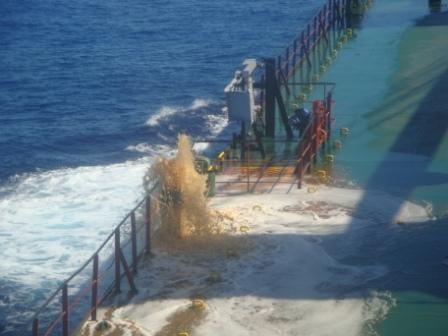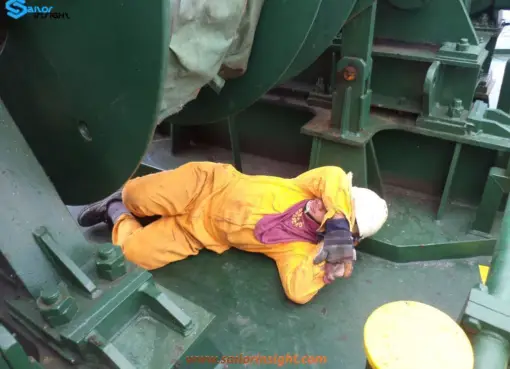As with other ships, tankers are high in the water (they have a large freeboard) when empty. Due to this the bow tends to bounce along the waves instead of slicing through them. This causes heavy stresses and also decreases the stability of the ship. Ballast is taken to increase seaworthiness, improve stability and equalize stresses on the hull.
Also, when the tanker is empty, the rudder and propeller are only partially submerged and hence are less maneuverable and both the rudder and propeller are much less efficient. So by taking ballast the rudder and propeller get more immersed and thus the ship’s maneuverability is improved and fuel economy is achieved. Also vibrations on board are reduced
AMOUNT OF BALLAST
When considering the amount of ballast to be taken, following factors are taken into account.
(1) The stress on the ship: Ballast must be evenly spread. Take care not to concentrate too much on the middle or the ends of the ship.
Here a practical point to note is :
However strong the ship is built, it will either Hog or Sag,. But it is very important to keep both Hog and Sag to the minimum. This can only be achieved by even distribution of the ballast or cargo.
Remember: that on ballast passages more tanks are left empty. It is very important to spread out these empty tanks evenly throughout the ship’s length.
NORMAL BALLAST IS ABOUT 30% THE CARGO DEADWEIGHT OF THE VESSEL
(2) The ship’s draft and trim should be kept within acceptable limits as stated in MARPOL. The minimum draft (dm) amidships should be:
dm = 2.0 + 0.02 L
Where L is length between perpendiculars (in inches)
Maximum trim permitted = 0.015 L
(3) Apart from the above two requirements – the propeller and rudder should be fully immersed for better efficiency.
REMEMBER
(4) Additional ballast has to be taken if the ship is expecting bad weather during the ballast voyage. This has to be taken as a precautionary measure.
POINT TO BEAR IN MIND BALLASTING / DEBALLASTING
(1) The loading or discharging plan prepared for a port should also include the sequences to be followed for ballasting or deballasting taking into account the stresses, stability, draft and trim. The plan should detail when the operation has to be carried out by gravity, when the pumps are to be started and when to start stripping the ballast tanks.
(2) Operation such as tank cleaning and change of ballast at sea should be planned in such a way that at anytime during the voyage –
- The stresses are not increased beyond permissible limits.
- The draft and trim requirements are met.
- The propeller and rudder remain immersed in the water.
(3) When planning to carry out tank repairs or pipe line repair inside the tanks – the tanks need to be washed and gas freed. This allowance has to be made in the ballast plan.
- Records of all ballasting and deballasting operations have to be maintained along with other cargo records.




